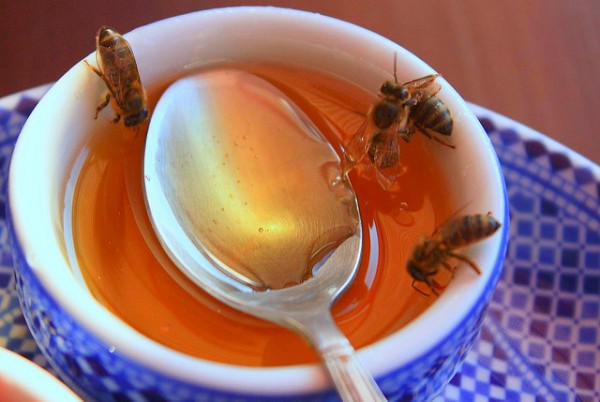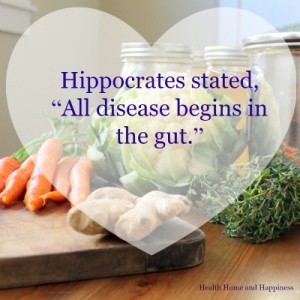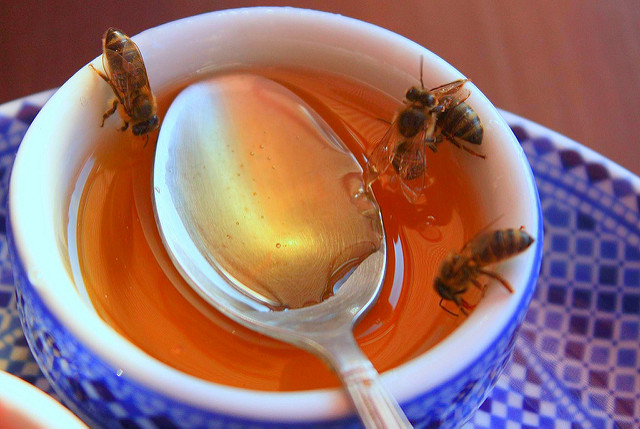
Is honey toxic when cooked? Every once in a while I have a commenter pops up telling me that honey is toxic when cooked. The thought is that honey changes form with heating (this part is true) and that then it is toxic.
GAPS Diet and Heating Honey
I haven’t really given this assertion a second thought since Dr. Natasha briefly addressed this in the FAQ section of her website (here)
“I generally do not recommend baking with honey, I recommend using dried fruit as a sweetener in baking. Yes, I agree that natural good quality honey is “alive”, that is why I recommend buying unpasteurised, untreated honey, straight from the bees and collected in ecologically clean areas. However, in some recipes honey works quite well. From my clinical experience and the experience of Elaine Gottschall there have never been any “toxic” reactions.”
We do encourage the use of date paste as an alternative to honey in most baked goods in the GAPS diet. This is more due to flavor and cost than concerns about honey becoming toxic. Dates are a nice mild-tasting fruit that sweetens our muffins quite well.
In any case, we can look into the theory that honey becomes toxic a little more.
Where did the idea come from that honey is toxic when cooked?
Honey has long been a natural super food, used in both food and as medicine in ancient cultures through today. When it is in its raw unprocessed state, it contains enzymes, pollen, and vitamins and minerals as well as fructose.
Honey is used to treat a variety of maladies:
- It has been shown to lessen coughs and improve sleep in children who have coughs (source)
- It is used to treat seasonal allergies (source) but a placebo-controlled study showed that this may not be effective (source)
- It is used to help burns and wounds heal when applied topically (source)
- It has antiinflammatory properties (source)
- It helps improve memory in menopausal women (source)
Honey and Botulism
Honey comes with some warnings. It is not advised for children under the age of 1, due to the minor risk of botulism spores, even in pasteurized and/or cooked honey (source). That said, the risk is also present for corn syrup yet the advice to avoid corn syrup in infants isn’t as well spread as the advice to avoid honey (source).
Honey’s toxicity when heated
In alternative circles, there is an assertion that honey becomes toxic when heated. Certainly, the enzymes present in raw honey are killed with high heat, just like they are killed in fresh fruits and vegetables when they are cooked. But this would not make it toxic.
The idea that honey becomes toxic when heated over 140 (or 104 – I’ve seen both numbers) degrees F comes from Ayurvedic wisdom. It is said that heating honey will cause “Ama” or undigested matter in the body, which is thought to be the root of disease. This idea would tie into the wisdom that all disease begins in the gut.

More about Ayurvedic wisdom, honey, and Ama
The best way to make a truly informed decision is to look with an open mind at both sides of the argument before deciding. There are many Ayurvedic recommendations for food, based on your constitution, you can see more here (pdf).
Sarah at The Healthy Home Economist talks about honey and Ayurvedic philosophy here:
While Ayurveda recognizes the many dietary and holistic benefits of honey, the dietary principles of this ancient system of health also strongly advise against heating it for any reason. The reasons are both practical and health-related.
First, Ayurveda claims that heating honey to 104°F/ 40°C orabove causes a negative chemical change that causes it to become bitter. This makes it undesirable to use from a culinary perspective in comparison with other natural sweeteners like unrefined cane sugar or fruit. (continue reading)
Scientific Studies
There is also a study that studies the properties of cooked honey on its own, and when mixed with ghee, when fed to rats (source)
There was a significant rise in hydroxymethyl furfuraldehyde (HMF) in 60º and 140°C heated honey samples. The browning and total antioxidant of honey mixed ghee samples was significantly higher when compared to ghee samples. Further, the authors have also evaluated the effects of consumption of heated honey, ghee, honey mixed with equal amount of ghee and heated honey mixed with heated ghee in rats. The feeding of heated honey and honey mixed with ghee for 6 weeks showed no significant change in the food intake, weight gain and relative organ weights. The study revealed that the heated honey mixed with ghee produces HMF which may cause deleterious effects.
What is hydroxymethyl furfuraldehyde (HMF)?
Seeing the chemical names of compounds makes them sound scarier than they often are. So let’s take a look at this compound that is found by heating honey.
“HMF is practically absent in fresh food, but it is naturally generated in sugar-containing food during heat-treatments like drying or cooking. Along with many other flavor- and color-related substances, HMF is formed in the Maillard reaction as well as during caramelization. In these foods it is also slowly generated during storage. Acid conditions favour generation of HMF. HMF is a well known component of baked goods. Upon toasting bread, the amount increases from 14.8 (5 min.) to 2024.8 mg/kg (60 min)” (source)
It appears that HMF is caused by heating sweeteners, both honey and other carbohydrate sources such as dried fruit, and corn syrup.
HMF is toxic to honey bees, which is why corn syrup being fed to honeybees can cause problems (source) and it is is also found in coffee (source).
Should we avoid honey in cooked recipes?
Unless we are following other dietary recommendations from the Ayurvedic wisdom, there is not good reason to avoid honey unless we are also avoiding all other heated carbohydrates and coffee.
That said, I wouldn’t say that heated honey is a ‘health giving’ food, but rather something that should be used in moderation. In my home, I keep both a jar of raw honey and conventional cooked honey from Costco. I don’t use the more expensive, healthier raw honey in cooked recipes such as Breakfast Cookies, candied walnuts, or egg white frosting.
I also use fruit to sweeten when possible. Raw honey is wonderful to add to anything that will not be heated to more than 110 degrees. I use it in popsicles, smoothies, and in salad dressings.
The Gut and Psychology Syndrome (GAPS) diet allows honey in cooking due to it containing primarily fructose, which is digested higher up in the digestive system and allows us to still have sweets, while also not feeding the pathogenic bacteria lower in the digestive tract.
Some people following GAPS and other healing diets find that they feel much better and have better healing while avoiding all carbohydrates, I wonder if the HMF present in cooked foods may be part of the reason why a low carbohydrate diet works for some people.
I’m sure three is a lot more to this, and I welcome your observations and comments :)
Learn how to heal leaky gut

60-page ebook of all my best GAPS Diet (Gut and Psychology Syndrome) articles all in one place.



This is an awesome post! Thank you for all your research and spelling it out so clearly.
Oh! this is a useful information. Thanks your post! I think a housewife as me, your article is beneficial. I often think honey is good entirely. At present, i have a value information.
what are your thoughts about putting honey in a hot cup of herb tea? Does that heat the honey to a point where it may become toxic or lose nutrients?
I think you must have skipped part of the article- you can bring honey to a roaring boil and it will still be just fine :)
I had switched to using maple syrup b/c I didn’t want to heat my honey. I enjoyed your article and now if I want to occasionally bake with honey it won’t be with any guilt,
Thank you, this is very useful information. It was an interesting read, especially with the explanation of what HMF is and numerous source links in the article itself.
I read several other articles that cited the same study, but claimed that heated honey was toxic and consuming it has dire consequences. I was skeptical because of the obvious logical leaps (I mean, “HMF kills bees” -> “HMF kills humans” is a pretty big jump) and the way that they wrote about HMF as though nothing else contains it. I’ll definitely keep your article in mind when I continue researching this topic.
Sorry, but didn’t the research pin point the temperature when the honey mixed with ghee, and not pure honey, turn toxic because of HMF above 140°C?
HMF isn’t toxic- it’s also in any cooked or dried fruit or coffee.
Hello,
Can you tell me what is happening with my honey? It turned extremely viscous after being heated several times, and it stays that way. I even put it in the freezer overnight to see what would happen, and it is still about as fluid as a very thin cooking oil. This happened once before a couple of years ago. (I have been heating it to about 150 degrees in water. Didn’t know that there was anything detrimental about that until reading your article – Thanks.)
Hello, I have been boiling water in the kettle and pouring the boiled water into a mug filled with either coffee or tea and then mixed with honey as a substitute for sugar – This has been occursing for maybe a year or two regularly and apparently a kettle at boiling temperature is 100 c and honey at toxicity level is 60 c (140 f) … I guess I should switch to maple syrup or allow the tea to cool down before adding honey?
Recently discovered that honey becomes toxic at a certain temperature,
Thanks!
Um… She states very clearly in the article that this is not true. Honey will not become toxic, no matter how hot it gets. Why comment without reading?
You could try being a tad nicer !
He was nice enough to tell him to do his due diligence before posting ignorant questions. All the answers were there. All he needed to do was to read. He did not respect the person that put in effort to bring all these information together to help others get informed.
This is the reason why people like him feel entitled because people like you are afraid of pointing out their mistakes. You are an enabler.
And why did you change your name to Glenda when your real name is Karen?
Hi great article. I thought I’d share as I’ve got personal experience in which I believe was down to heating honey. I was a fit 32 year old at the time & couldn’t understand why I felt so lethargic all the time as I ate a natural healthy diet rich in nutrients. After doing much research I came across the ayervedic theory that when honey is heated it changes the enzymes & forms a goop that sticks to your intestine walls, making it hard to absorb the nutrients from your food. I was having almost a teaspoon of it in my cup of tea on average of 3 cups a day for the last 10 years! I can honestly say after stopping that habit for over 6 months now, I feel fantastic! So much more energy, I feel energised from my food, the brain fog has gone, I sleep so much better. I can’t say if it’s toxic, but from my experience, I definitely believe the Ayervedic theory about heating honey. They say it’s fine know & again but if it’s consistent in your diet, thats when it builds up in the intestine & wreaks havoc on the body.
I agree with you there, its so american of people thinking that heating certain foods wont do anything harmful to the body. I would trust anything from ayervedic wisdom over some blogger any day of the week.
This is my real story.. Yesterday evening I was making lemon tea and for the 1st time i thought to use honey in stead of sugar.. So i added honey while the kettle was getting heated and countinued heating for the another 2-3 minutes.. Everything was normal until midnight.. At 3 am i suddenly started experiencing severe acidity followed by vomiting.. I was shocked because i had not eaten any oily food or anything outside for the last couple of days.. I used to occassionally get acidity when i eat outside too much but it used to be very less and rare.. But for the first time acidity was in a very severe scale..It felt like acid was being poured into stomach just like water from a glass.. I was confused why it happened but when I tried to recollect what i had eaten and then searched online about the heated honey thing.. So i believe it might be because of the heated honey..I am not saying i am 100% sure but i doubt it might be the cause of severe acidity in the middle of that night.
Why ever would you use a cheapo honey from bees treated with antibiotics and more, on the GAPS site for good health?